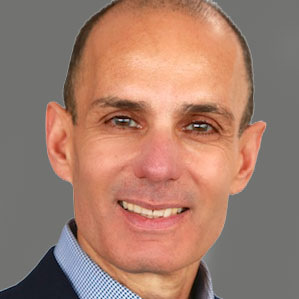Are your leaders all in?
Building a high-performance culture in an organization is a daunting undertaking. Anyone who has taken on such a commitment on would attest to that fact.
You are never going to get it perfectly right. You need nerves of steel and a combination of conviction and drive together with patience and tolerance for a messy process.
The main reason, of course, is that people are different, with diverse personalities, styles, and commitments. The likelihood of getting everyone in the organization to commit to the change, growth or success you are trying to implement is slim to none.
At the level of the employees, that’s OK. In fact, even with the managers, you don’t need to achieve 100% ownership and commitment to your goals. As long as you achieve a critical mass of buy-in and commitment with your managers you will have enough steam to succeed in your endeavor.
However, when it comes to your senior leadership team you must have 100% ownership, alignment, and commitment among 100% of your senior leaders toward the change, growth, and success you are trying to achieve.
If the head of the organization or team can’t completely enroll his/her leaders in his/her commitments, objectives and execution strategy you can bet that the effort won’t succeed.
A committed and determined leader will do his/her best to enroll, inspire, engage and even demand that his/her leaders own, lead and drive the new direction.
However, if the leader doesn’t succeed he/she must have the courage to make the tough decision to replace the leaders who won’t step up with ones who will. Nothing less than 100% ownership and commitment at the Leadership level will suffice to achieve a high-performance game!
Unfortunately, many organizations and leaders don’t seem to understand this simple nuance of total commitment. They underestimate how critical this point actually is, or they lack the courage to make the tough, uncomfortable, disruptive, unpopular decisions in order to achieve that 100%.
Many CEOs like their leaders on a personal level, which make these dilemmas even harder. In many cases, the CEO has been ‘in the trenches’ with his/her team members for a long time, so there is a bond and a sense of loyalty between them. That makes matters more difficult too. In other cases, certain people whether committed or not are a source of priceless knowledge, experience, and expertise. So, the idea of letting someone like that go or even upsetting them by merely changing their role in order to give way to someone more suited to the cause is understandably challenging. However, if a CEO wants to build a high-performance culture and game, he/she must be willing and able to make these calls in order to build a genuinely committed team around him/her.
Take as an example the struggles of the CEO of an up-and-coming technology company that was on a path of significant growth. He had just acquired a couple of companies in order to expand and strengthen his product and services platform. He was under tremendous pressure from his board to continue to manage the company’s aggressive growth, while at the same time integrate the companies he had acquired. The combination of significant growth and change was putting a lot of pressure and stress on everyone.
Needless to say, this was the time for his senior leaders to come together in the most unified and aligned way in order to lead and drive the opportunities and challenges of the change in the most cohesive, effective and rapid way, whilst continuing to unify and motivate the overworked and stressed out managers and employees.
However, this was not the case. Most of the senior leaders clearly understood the need for strong unification at the leadership team level, and they made attempts to bring the senior team together. However, a couple of the most senior leaders in the team who were also the CEO’s favorites, and who enjoyed the special attention and ‘privileges’ that relationship afforded them, were cynical about spending the time on teamwork, so they blocked these attempts to rally the leadership team.
Even when the pressure was mounting, as company performance was declining, the CEO did not take action to bring his senior team together, and/or coach and discipline the troublemakers.
He continued to interact with his senior leaders on an individual basis, which resulted in him working harder but his leaders working in silos. He talked about the need to increase scale and productivity, but his actions missed out on the opportunity to share the load with his leaders and elevate their individual and collective ownership, effectiveness and productivity at such a critical time.
Any organization is a reflection of its leadership team. The culture of your organization will only be as strong as the culture, behaviors, attitudes, and dynamics within your senior team. If you want to build a high-performance team in your organization start by modeling this behavior and dynamic with your senior leaders.
When it comes to ownership and commitment within the senior leadership team of your organization, don’t give your leaders discounts; the team is either all in or they are not in at all!





Leave a Reply
Want to join the discussion?Feel free to contribute!